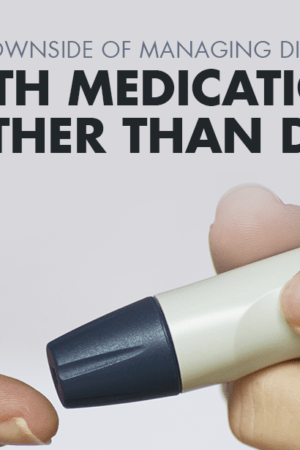As America faces an obesity crisis, a new health threat is emerging on the horizon—Type 2 diabetes (T2D). Working together with the Center for Disease Control (CDC), physicians across the country are combating this life-threatening illness with a simple treatment—improved nutrition, increased physical activity, and lost weight.
The rising cost of a rising scale
If you’re like most Americans, you can probably stand to shed a few pounds for your health. According to data from the CDC, about 93.3 million Americans suffer from obesity. Obesity has been linked to a host of illnesses, ranging from heart disease to certain types of cancer.1
Obesity has also been long-connected with T2D, a disease in which the body has trouble producing and regulating insulin. This can cause the blood sugar to rise to unhealthy levels, a condition called “hyperglycemia.” The number of Americans being diagnosed with T2D is rising, and they are being diagnosed at almost the same rate as obesity—according to the CDC, over 100 million Americans now have diabetes or pre-diabetes. Diabetes can seriously affect overall health and can even lead to death if left untreated.2
Fighting back against Type 2 diabetes
In order to push back against increasing rates of T2D, many physicians are recommending a simple treatment: good old-fashioned diet and exercise, which have been shown to promote the maintenance of a healthy weight. According to the CDC, a number of studies have connected maintaining a healthy weight with a decreased risk for developing diabetes.3 By losing weight, men and women living with diabetes can improve their body’s glucose tolerance—an important factor when it comes to using insulin.
Research has also shown that men and women diagnosed with prediabetes who lost ten percent of their body weight saw a decreased risk of developing nerve damage to the feet (neuropathy), kidney failure, liver damage, and eye problems. Additionally, losing weight has also been projected to protect against the development of a number of diabetes-related illnesses, including heart disease and strokes.4
What is causing the increase in diabetes and obesity?
It’s impossible to deny that Americans are getting larger, but physicians and other medical professionals are not in agreement when it comes to determining what has caused this shift. Many food researchers blame the rise of fast food restaurants, which offer customers a quick-fix to their hunger with mountains of added sugar and carbohydrate-laden treats that hook consumers. Increasing numbers of physicians are fighting back against the surge of carb-heavy diets by recommending that their patients stick to a diet that’s high in filling proteins and nourishing fats and low in empty carbohydrates to facilitate manageable weight loss.
While there is currently no prescription drug available to completely cure Type 2 diabetes, drug researchers and developers continue to research this all-too-common condition. For the foreseeable future, Americans living with diabetes will receive tried and true advice—slim down for success.
NUTRITIONAL DISCLAIMER
The content on this website should not be taken as medical advice and you should ALWAYS consult with your doctor before starting any diet or exercise program. We provide nutritional data for our recipes as a courtesy to our readers. We use Total Keto Diet app software to calculate the nutrition and we remove fiber and sugar alcohols, like erythritol, from the total carbohydrate count to get to the net carb count, as they do not affect your blood glucose levels. You should independently calculate nutritional information on your own and not rely on our data. The website or content herein is not intended to cure, prevent, diagnose or treat any disease. This website shall not be liable for adverse reactions or any other outcome resulting from the use of recipes or recommendations on the Website or actions you take as a result. Any action you take is strictly at your own risk.
- This Grocery Store Team Lost Over 200 Pounds Using Keto - December 19, 2018
- Treating Diabetes with Weight Loss - December 12, 2018
- Ancient Nutrition Connects With Natural Partners - December 5, 2018




